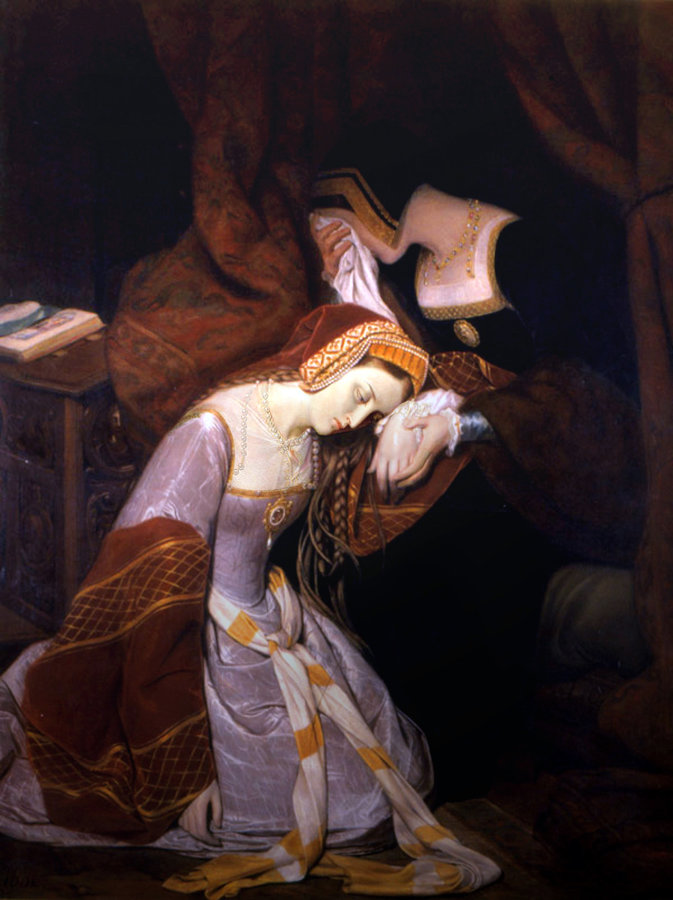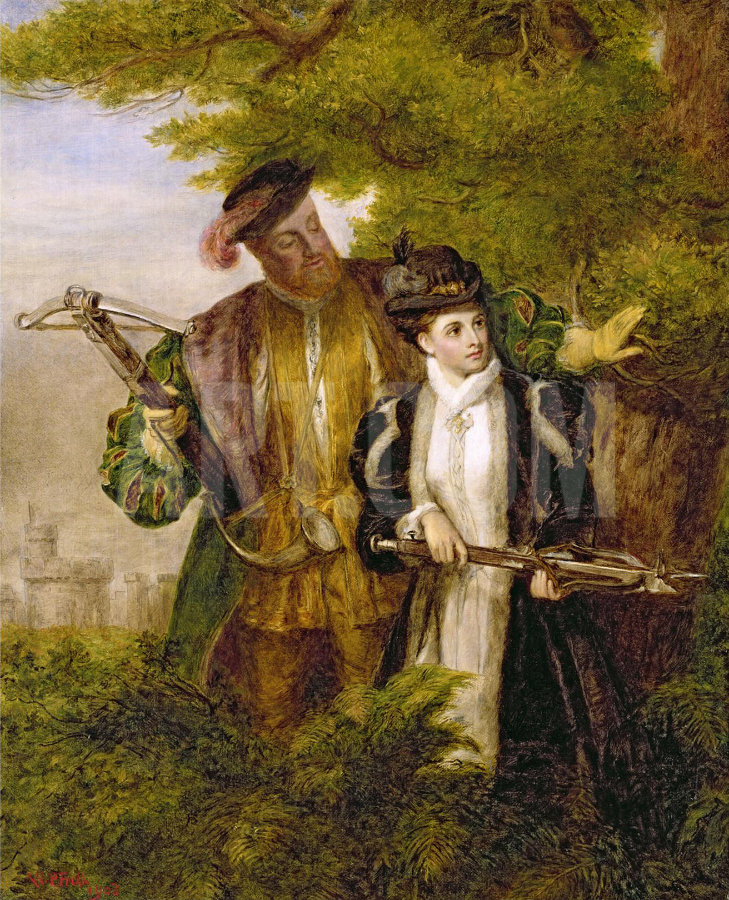Anne Boleyn (c. 1501 – 19 May 1536) was Queen of England from 1533 to 1536, as the second wife of King Henry VIII. The circumstances of her marriage and of her execution by beheading for treason and other charges made her a key figure in the political and religious upheaval that marked the start of the English Reformation. Anne was crowned Queen of England on 1 June 1533. On 7 September, she gave birth to the future Queen Elizabeth I. Anne subsequently had three miscarriages and by March 1536, Henry was courting Jane Seymour. In order to marry Seymour, Henry had to find reasons to end the marriage to Anne. Anne investigated for high treason in April 1536. On 2 May, she was arrested and sent to the Tower of London. She was convicted on 15 May and beheaded four days later. A number of people have claimed to have seen Anne’s ghost at Hever Castle, Blickling Hall, Salle Church, the Tower of London and Marwell Hall. One account of her reputed sighting was given by paranormal researcher Hans Holzer. In 1864, Captain (later Major General) J. D. Dundas of the 60th Rifles regiment was billeted in the Tower of London. As he was looking out the window of his quarters, he noticed a guard below in the courtyard, in front of the lodgings where Anne had been imprisoned, behaving strangely. He appeared to challenge something, which to Dundas “looked like a whitish, female figure sliding towards the soldier”. The guard charged through the form with his bayonet, then fainted. Only the captain’s testimony and corroboration at the court-martial saved the guard from a lengthy prison sentence for having fainted while on duty.
| Alias Ghost of Anne Boleyn |
| Real Names/Alt Names Anne Boleyn |
| Characteristics Paranormal Mysteries, Disembodied Body Part, Ghost, Scientific Revolution, British |
| Creators/Key Contributors ○ |
| First Appearance Historical figure (b. 1507 – d. 1536) |
| First Publisher ○ |
| Appearance List David Hume’s The History of England (1812) (about Anne Boleyn’s life); Abbeys, Castles, and Ancient Halls of England and Wales (1825; expanded 1870s) by John Timbs; Her Majesty’s Tower (London: Hurst & Blackett, 1869–71) by William Hepworth Dixon; The Tower from Within (London: Allen & Unwin, 1918) by Lady Lawley (wife of the Governor of the Tower of London), co-authored with Brigadier-General Sir George Younghusband; Hans Holzer’s Ghosts I’ve Met (1965). |
| Sample Read The Tower from Within (1918) [Internet Archive] |
| Description Anne Boleyn (c. 1501 – 19 May 1536) was Queen of England from 1533 to 1536, as the second wife of King Henry VIII. The circumstances of her marriage and of her execution by beheading for treason and other charges made her a key figure in the political and religious upheaval that marked the start of the English Reformation. Anne was crowned Queen of England on 1 June 1533. On 7 September, she gave birth to the future Queen Elizabeth I. Anne subsequently had three miscarriages and by March 1536, Henry was courting Jane Seymour. In order to marry Seymour, Henry had to find reasons to end the marriage to Anne. Anne investigated for high treason in April 1536. On 2 May, she was arrested and sent to the Tower of London. She was convicted on 15 May and beheaded four days later. A number of people have claimed to have seen Anne’s ghost at Hever Castle, Blickling Hall, Salle Church, the Tower of London and Marwell Hall. One account of her reputed sighting was given by paranormal researcher Hans Holzer. In 1864, Captain (later Major General) J. D. Dundas of the 60th Rifles regiment was billeted in the Tower of London. As he was looking out the window of his quarters, he noticed a guard below in the courtyard, in front of the lodgings where Anne had been imprisoned, behaving strangely. He appeared to challenge something, which to Dundas “looked like a whitish, female figure sliding towards the soldier”. The guard charged through the form with his bayonet, then fainted. Only the captain’s testimony and corroboration at the court-martial saved the guard from a lengthy prison sentence for having fainted while on duty. |
| Source Anne Boleyn – Wikipedia |



